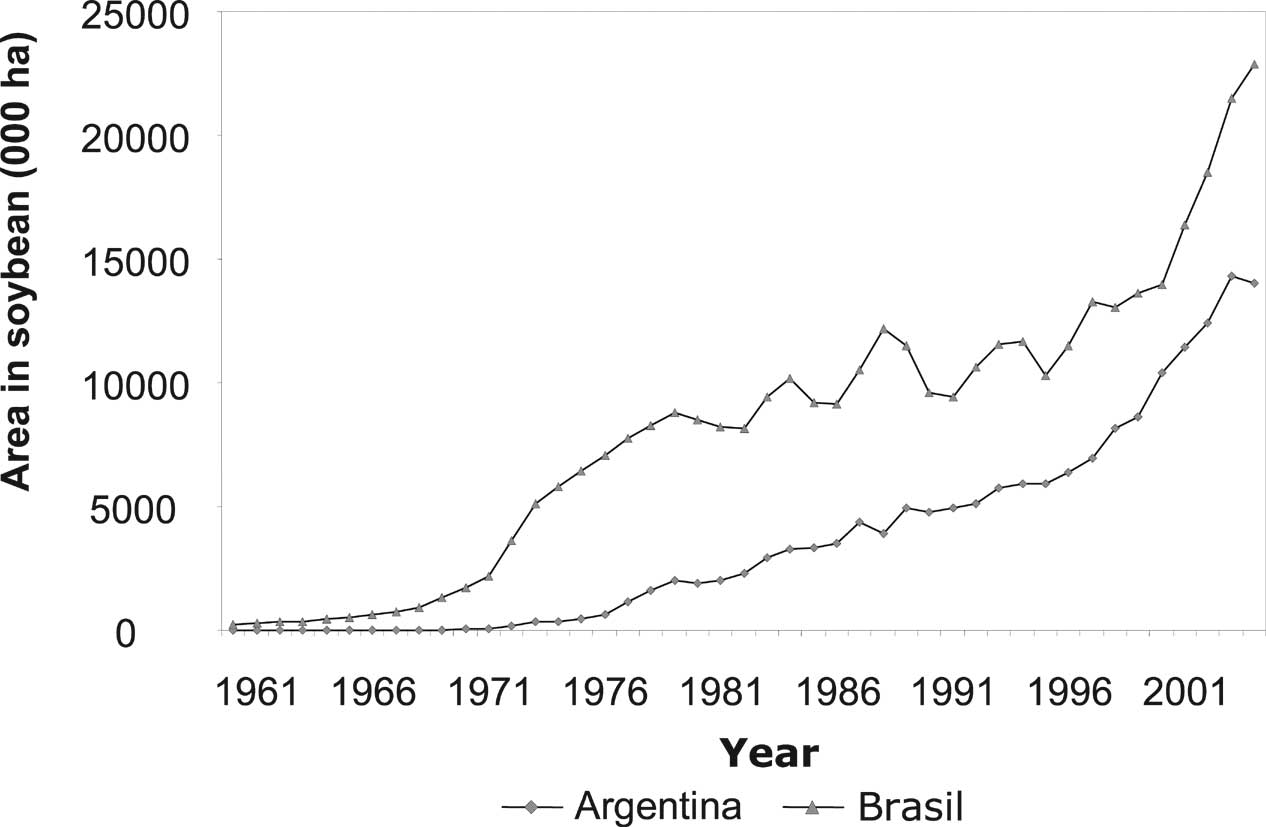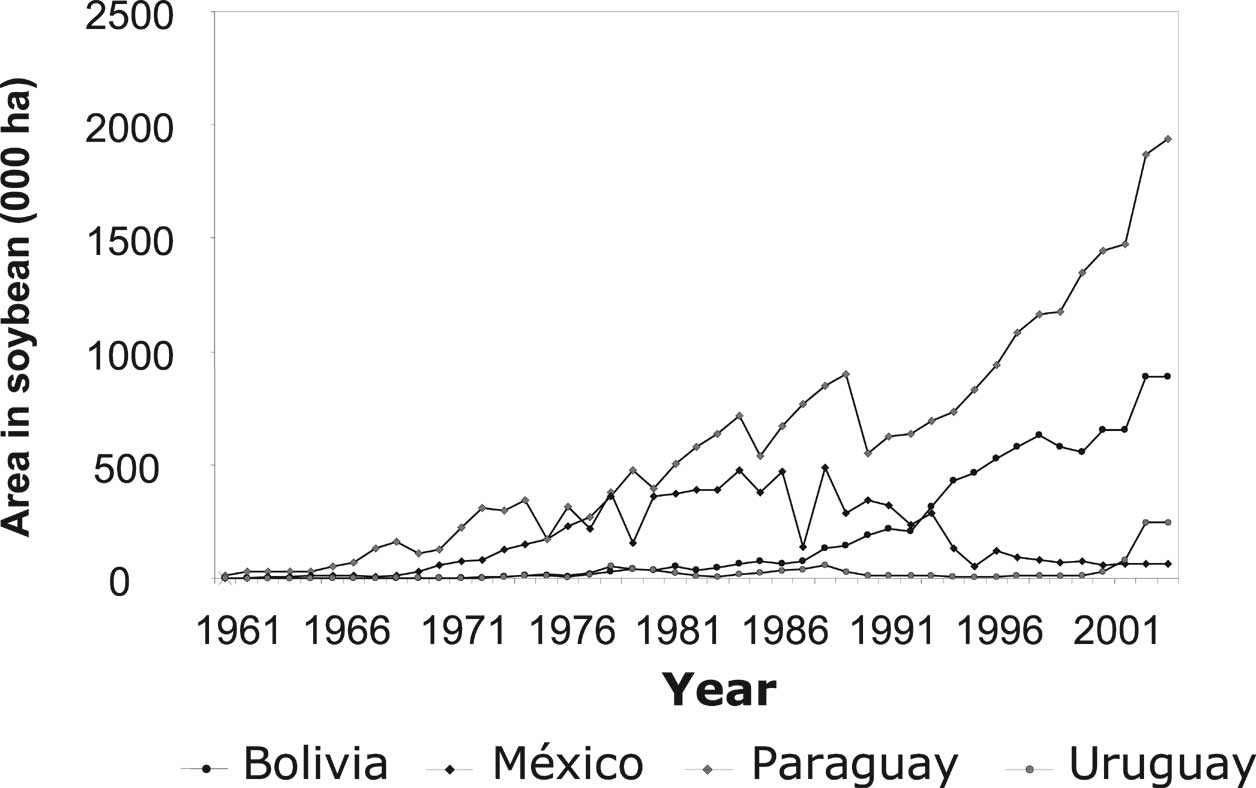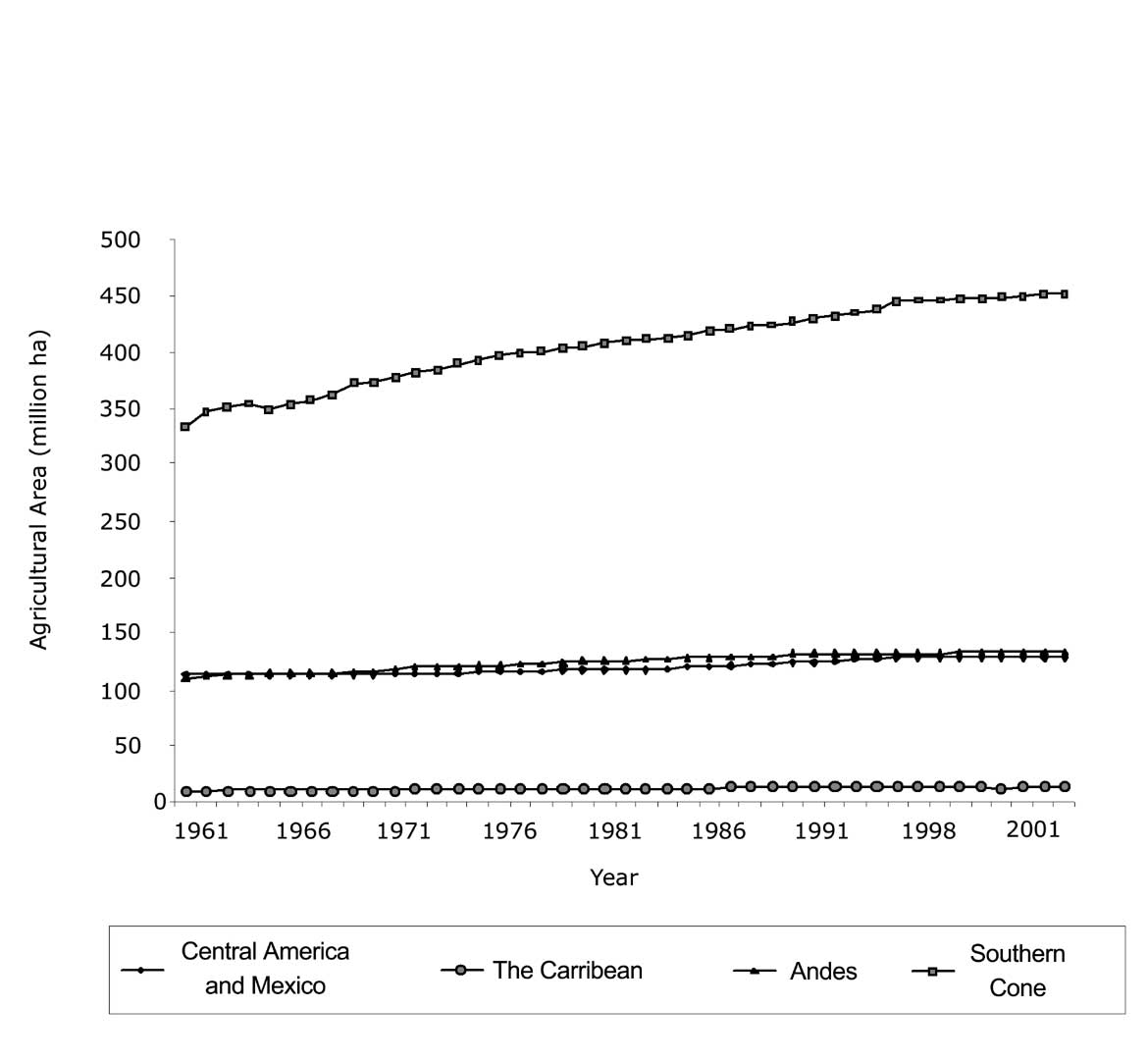Figure 1-6. Change in the use of land in the 4 geographic regions of Latin America and the Caribbean. Source: Authors’ elaboration from FAOSTAT data.
of the Southern Cone (including pastureland) (FAOSTAT, 2005). In Brazil, the expansion of soybean has occurred at the expense of natural vegetation and more recently of the tropical forest in the Amazon (Fearnside, 2001b), while in Argentina the increase in soybean has been at the expense of the production of milk, maize, wheat and fruit crops, as well as areas of natural vegetation such as the Yungas rain forest and the dry forest of the Chaco (Jordan, 2001; Jason, 2004; Pengue, 2005). Due to the expansion of soybean in Argentina, the rate of conversion of forest to agriculture is three to six times the global average (Jason, 2004). The expansion of this crop has also accelerated deforestation indirectly by means of the construction of railways and an extensive network of highways that attract cattle growers, mining companies and logging interests to the Amazon jungle and by displacing small-scale producers (Fearnside, 2001a) (see Box 1-7).
Another major change in this area has been the expansion of cattle-ranching in Brazil. Brazil has increased its cattle herd by 122 million animals in the last 15 years (an 83% increase) and today has 269 million animals (Figure 1-8). This expansion has also taken place at the cost of the Amazon forests. According to Giglo (2000), the expansion of cattle in Brazil (and Bolivia) was facilitated by tax incentives put in place by the governments (for example, the “Amazonas Legal” program in Brazil) and the availability of cheap labor.
The total agricultural area in Mesoamerica increased almost 9% from 1961 to 1990, but only 4% since 1990 (Figure 1-6). Though initially Belize, Costa Rica and Guatemala contributed considerably to the increase in agricultural lands in the region, since the 1990s Belize, El Salvador and Nicaragua have experienced the greatest increases (27%, 19% and 11%, respectively). Surprisingly, Honduras has been experiencing a decline in agricultural lands since the 1990s; its agricultural area has diminished almost 13%. This is mainly due to the decline in banana production, which was Honduras’s main export during the first half of


Figure 1-7. Growth of cultivated surface in soy of LAC countries with the largest volume of production. Source: Authors’ elaboration from FAOSTAT, 2005.
the 20th century, but which began to fall as the result of a combination of diseases, labor organizing and globalization (Soluri, 2005).
The Andean region shows a similar pattern of change as Mesoamerica (Figure 1-6), with an increase in the total agricultural area of 16% from 1961 to 1990 and 4% since 1990. Ecuador is the country with the greatest change in the first three decades (65%), but it increased only 4% since 1990, whereas Peru saw an 11% increase in the same period. The other Andean countries, with the exception of Venezuela (which has seen almost no change in its total agricultural area since 1990), have seen increases of 2-5%.
The Caribbean is the region with the smallest area in LAC. This region experienced a 35% increase in the area planted; Cuba is the country that contributed most to this increase. In the first three decades of the Cuban Revolution, it expanded its agricultural area 91%, while other Caribbean countries saw decreases. Since 1990 there has been a decline in total agricultural lands of 1.3% in the Caribbean. Although most of the Caribbean countries experienced a diminution in agricultural area (including Cuba, but especially Puerto Rico, with a decline of 51%), other countries, such as Dominica, Bahamas and Saint Vincent, had relafromCK
